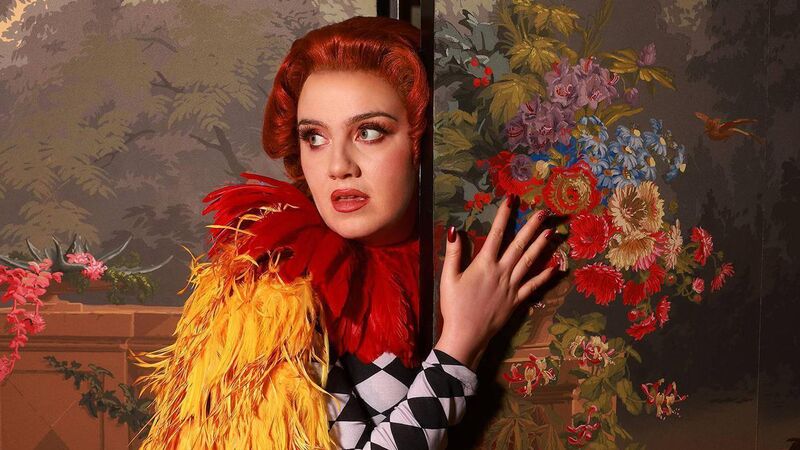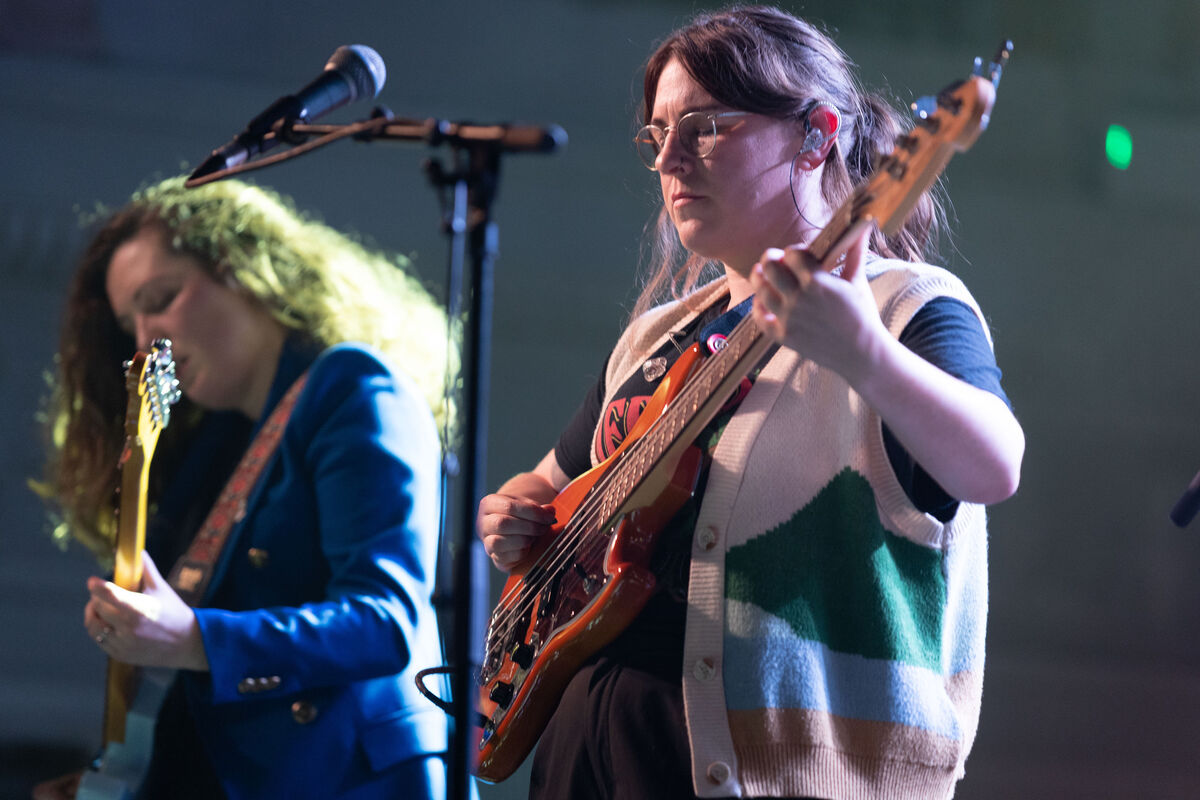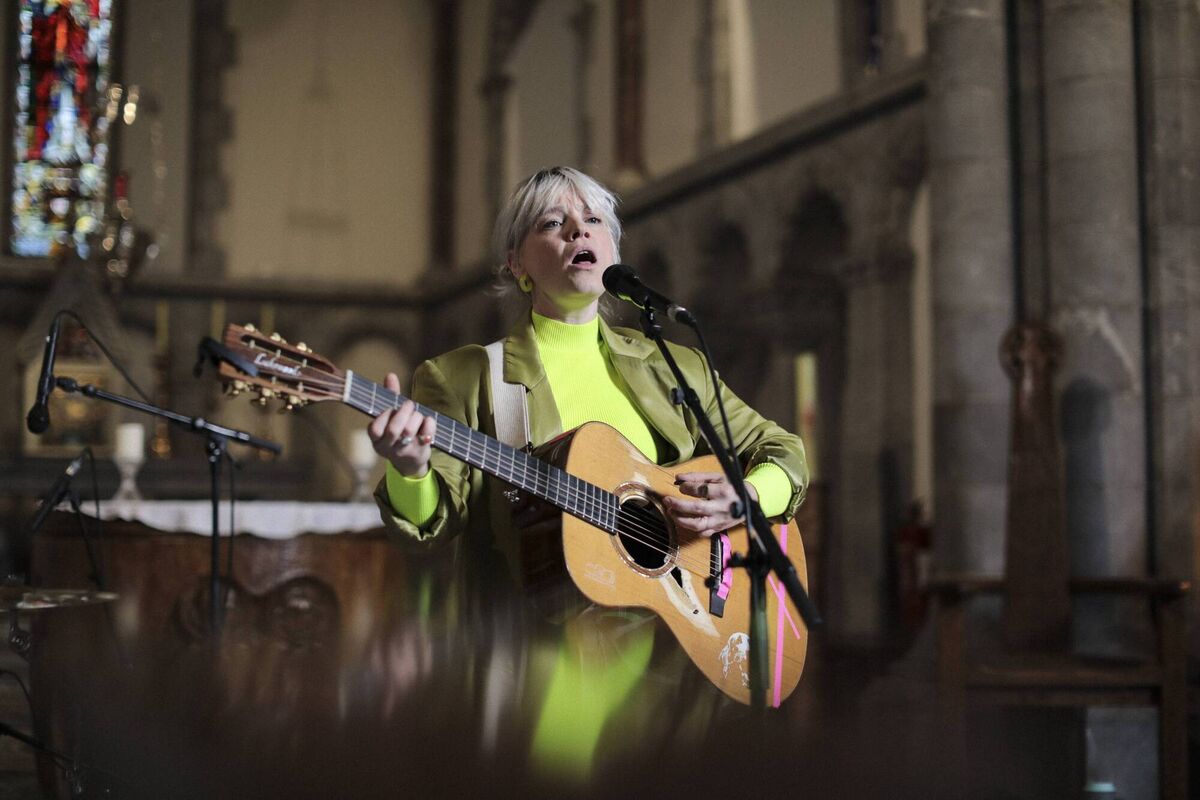The great disappearing act: Irish female musicians

CMAT is among a number of Irish female musicians selling out massive venues in Ireland, indicating a significant fanbase that remains untapped.
'Invisible Women, Visible Men' is a talk I’ve been giving for over a decade about how men are promoted, featured and paid in the Irish creative industries while many women are side-lined, silenced and expected to provide their services for free or for less than men.
It's disheartening to note the music and media industries in Ireland, despite their cultural significance, are among the poorest performing and most resistant to change.
In contrast, business, politics, and the film sector have actively pursued positive transformations through various campaigns and research initiatives that aim to alter cultural norms and eliminate barriers to female participation, such as the 30% Club, Women for Election, SeeHerRun, and Screen Ireland.
Even the sporting bodies, initially outliers in gender equality, were prompted to change when the minister for sport withheld funding until gender parity was achieved on their boards — a drastic yet effective measure.
Despite multiple campaigns over the years, such as Women on Air, Waking the Feminists, WhyNotHer?, Mise Foste, Fair Ple, and Herstory, which highlighted issues ranging from exclusion and sexism to bullying, misogyny, and sexual harassment, the industry's response has been disappointingly tepid.
The story is further elucidated by data, with the WhyNotHer? collective publishing a list of what Irish and UK radio stations play since 2020. The figures are damning — in the entirety of 2023, a mere 3% of the top 100 most played songs on radio were sung by Irish women. The preceding year recorded a staggering 0%.
This dearth of representation makes it exceedingly challenging for artists to build a following, perform at concerts and festivals, or secure record label contracts, rendering making a living as a musician nearly impossible.

Intriguingly, Irish radio stations have been aware of their playlisting bias against Irish women for four years, yet they have unabashedly decided it doesn't matter for their audience or for the careers of these women.
A stark contrast emerges when examining the change that occurred in the UK after WhyNotHer? published the playlisting data four years ago.
British radio stations promptly pledged to do better, establishing diversity working groups and achieving 48% domestic artists and near gender parity in their top 100 songs across radio in 2023.
Back in Ireland, despite WhyNotHer? providing radio stations with diversity toolkits and offering free diversity training courses, no stations took up the offer. Instead, they have done nothing substantial to address their playlisting bias against Irish female musicians, except for a few token gestures, particularly on International Women's Day when they briefly champion gender equality.
Curiously, Irish radio stations do not seem to have an issue playing non-Irish women, as 31% of international female solo acts are featured in the top 100. The crux of the matter lies in how they perceive and hear Irish female artists, leading to a conscious decision not to play their music — a situation that could be considered discrimination or conscious bias.
The economic, social, and cultural impact of this disappearance is profound. Ignoring half the workforce could result in these talented musicians either ceasing to make music or seeking better opportunities abroad. Notably, artists like Pillow Queens, Orla Gartland, Ruthanne, Áine Tyrrell, and Ostella have already made this move.

Despite Ireland's international reputation for creativity, our radio stations — which operate on public airwaves — have only played 19% of Irish acts in their top 100 songs of 2023, with a mere 3% being women. This stark disparity underscores the undervaluation of domestic talent compared to international music.
Turning to the financial landscape, broadcast and print media, seeking more Government funding due to advertising shortfalls, often overlook the potential in breaking Irish female artists who consistently sell out massive venues.
The media executives fail to consider their obligations to the public and what their potential audiences want and need. Radio stations, crying poverty, seem oblivious to the solution at hand — adopting a business model that includes playing a greater diversity of artists across multiple platforms.
Noteworthy artists like CMAT, Pillow Queens, Wallis Bird, and many more are selling out massive venues in Ireland, indicating a significant fanbase that remains untapped.
It's disheartening that voluntary measures have failed to improve diversity in music and the media. Clearly, this is a cultural problem that demands Government intervention. Taking cues from industries that have seen progress — business, politics, and sport — we must employ methods such as data collection, targets, quotas, and financial penalties to bring about tangible change.
In a call to action, we urge Media Minister Catherine Martin to conduct a culture audit of the industry, hold stations accountable for their lack of diversity, ensure female musicians and broadcasters are free from harassment at work, and demand transparency in the media’s business models. We invite everyone to sign our petition at here.
As a leadership consultant, diversity, equality, and inclusion campaigner, and journalist, I remain committed to shedding light on and advocating for the issues faced by Irish female musicians. The great disappearing act must end, and it's time for lasting change in the Irish music landscape.














